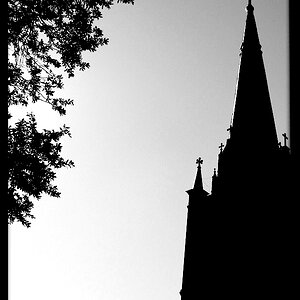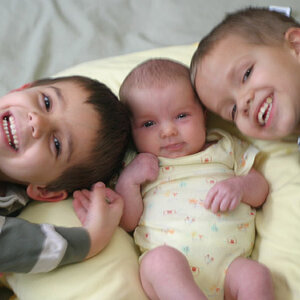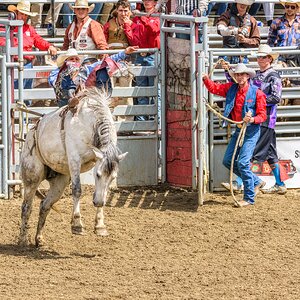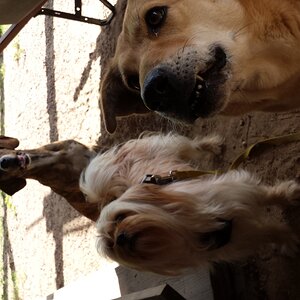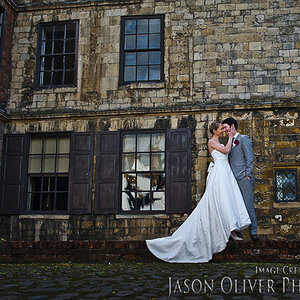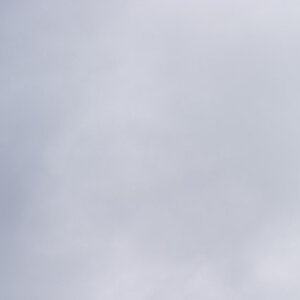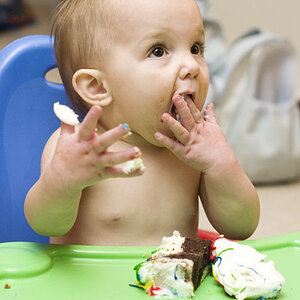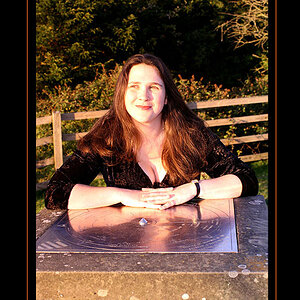Feathers
TPF Noob!
- Joined
- Sep 2, 2012
- Messages
- 5
- Reaction score
- 3
- Can others edit my Photos
- Photos OK to edit
I teach middle school art. I've been lucky enough to get 8 used digital SLR cameras as our high school photo classes upgraded and have set up a short photography unit. I have had a bunch of older film cameras donated and we look at them to see how a camera works (watch a shutter open at different speeds, look at the aperture open and close, let some of them touch film for the first time in their life, etc).
Then we do two lessons. For one I put black paper up on the windows and we set one camera up on a tripod in the front of the room and do light painting with flashlights (and cell phones) and let those without lights do multiple poses. We do several sets of three, looking at the results on the classroom screen, so students can learn what works and what doesn't work- they often move too much at first thinking they'll show up on 8 different places (which means they don't really show up in our photo at all). For the second lesson we do water drop photography- to freeze motion- with all 8 cameras in small groups. I only have two tripods so we go without them. I have students set the camera on their elbows on the table while they manual focus on a pencil at the location of the dripping water. This works out better than you would think actually. It also forces each student to do all their own focusing when it is their turn with the camera. We have multiple backdrops of various colors and materials, watercolor paint to put in the baggie water supply to turn the water different colors, and I think we're going to experiment with gelling our flash next time. Even with only the on camera flash and kit lenses we get photos the kids find amazing. Then, if we have time, we take the photos into Pixlr and do adjustments and effects.
So I'm here to gather wisdom. Any ideas on what else I could do with a class of middle school kids and the cameras? I will take them outside if the weather permits, but I'm really looking for other ideas I could do in my room so I don't have to worry about weather.
I have also started an after school photo club and that is a smaller group that I can do more involved things with. So even if you have an idea that may be too complicated for a general class feel free to share. I might be able to use it with them.
This has been a very successful unit already and it is very gratifying to see students go from the introduction where I get stuff like "Isn't photography just pushing the button on your phone?" to real understanding of the creative aspects of photography and students telling me they're planning on taking photography in high school as a result of our short unit. But I'm always looking to make things better. Maybe you can help?
Thanks!
Then we do two lessons. For one I put black paper up on the windows and we set one camera up on a tripod in the front of the room and do light painting with flashlights (and cell phones) and let those without lights do multiple poses. We do several sets of three, looking at the results on the classroom screen, so students can learn what works and what doesn't work- they often move too much at first thinking they'll show up on 8 different places (which means they don't really show up in our photo at all). For the second lesson we do water drop photography- to freeze motion- with all 8 cameras in small groups. I only have two tripods so we go without them. I have students set the camera on their elbows on the table while they manual focus on a pencil at the location of the dripping water. This works out better than you would think actually. It also forces each student to do all their own focusing when it is their turn with the camera. We have multiple backdrops of various colors and materials, watercolor paint to put in the baggie water supply to turn the water different colors, and I think we're going to experiment with gelling our flash next time. Even with only the on camera flash and kit lenses we get photos the kids find amazing. Then, if we have time, we take the photos into Pixlr and do adjustments and effects.
So I'm here to gather wisdom. Any ideas on what else I could do with a class of middle school kids and the cameras? I will take them outside if the weather permits, but I'm really looking for other ideas I could do in my room so I don't have to worry about weather.
I have also started an after school photo club and that is a smaller group that I can do more involved things with. So even if you have an idea that may be too complicated for a general class feel free to share. I might be able to use it with them.
This has been a very successful unit already and it is very gratifying to see students go from the introduction where I get stuff like "Isn't photography just pushing the button on your phone?" to real understanding of the creative aspects of photography and students telling me they're planning on taking photography in high school as a result of our short unit. But I'm always looking to make things better. Maybe you can help?
Thanks!



